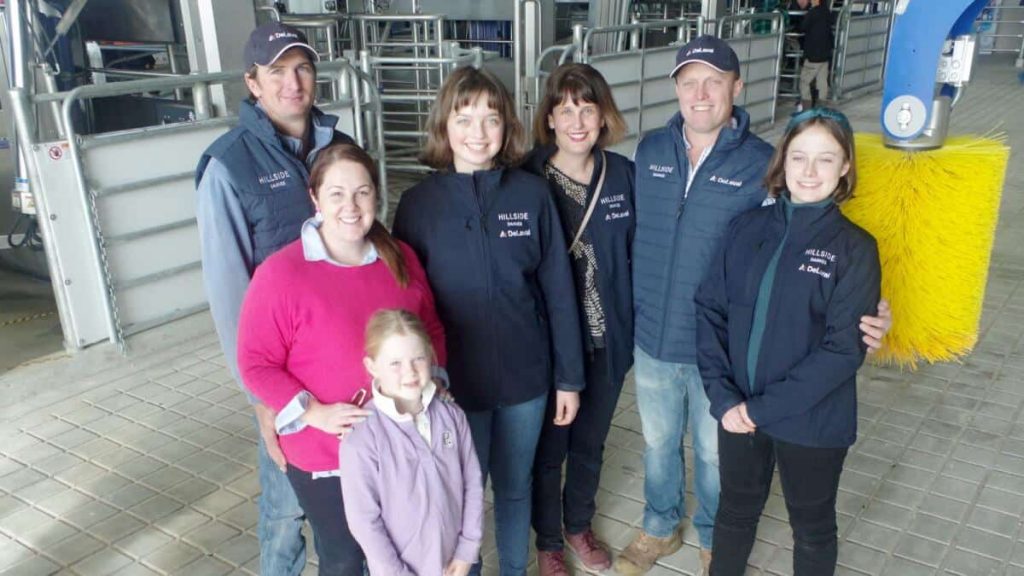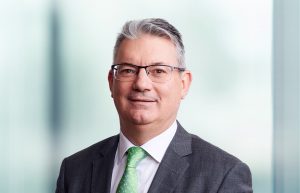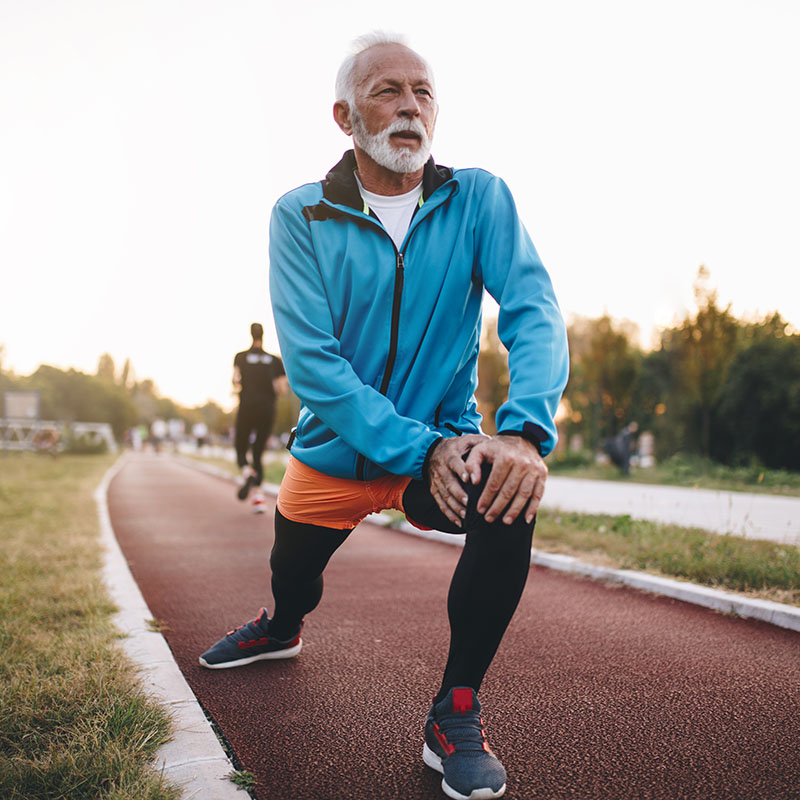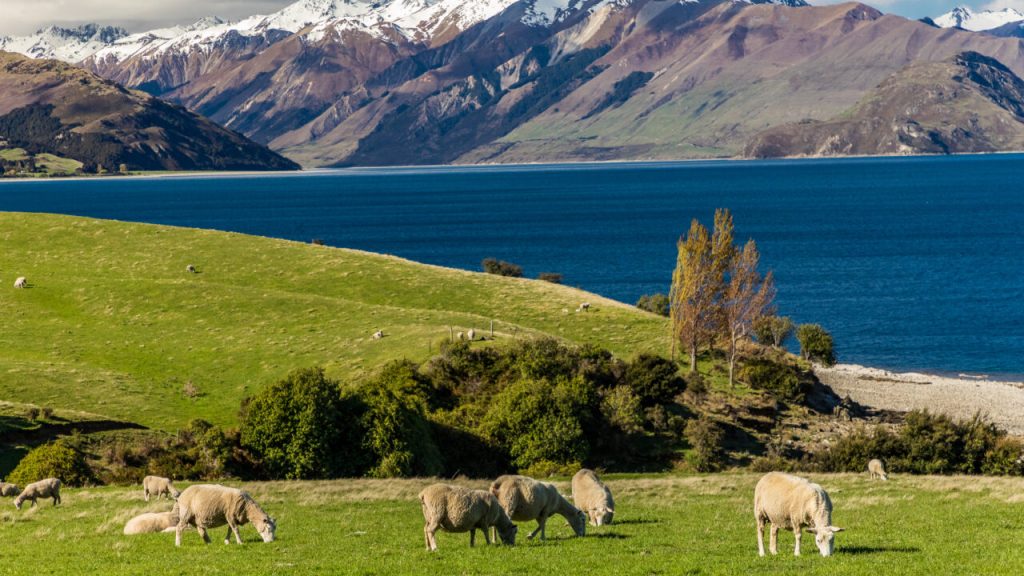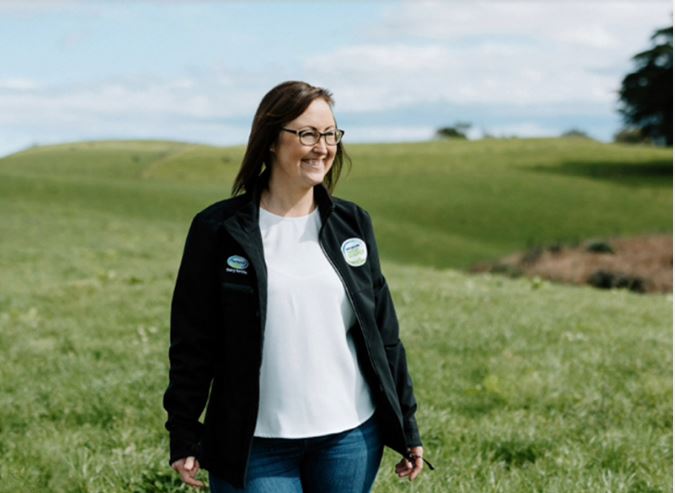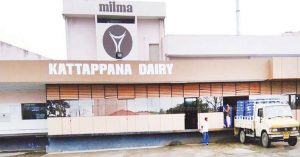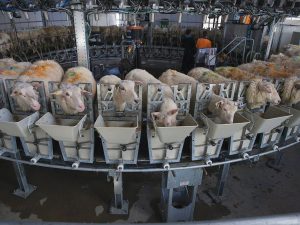When Alister and Katie Clyne invested in a 16-box DeLaval voluntary milking system (VMS, or robot dairy), their forecast return on investment was measured in labour efficiency and their occupational health and safety obligations.
Twenty-three years ago, Alister’s father Alan Clyne, joined three separately managed dairy farms with herringbone sheds into one farm after building a rotary dairy on the property known as Hillside, at Tinamba in the Macalister Irrigation District.
Today, the business, Hillside Dairies, owns and leases a combined 668 hectares of country, under a mixture of flood and pivot irrigation.
They grow 30ha of corn annually that is harvested in April as pit silage, and fed to all livestock.
They buy in 500 tonnes of hay annually, a mix of oats, vetch and straw, and 600 tonne dry matter of corn silage.
Optimising the capacity of the rotary dairy, the farm grew to a 1300-cow production system.
They had peaked and run-over with the number of cattle they should have on the farm.
“Since 2004, we have milked between 900 and 1300 cows,” Alister said.
“I run four cows/ha on the milking platform.”
Alister and Katie also own a 92ha dairy farm called Greenvale across the road, and brought the 30-bail swingover dairy shed into production, offloading 400 cows to be milked and grazed there.
The second lactation and above August-calving cows move from Hillside Dairies to join the herd on this farm.
“We bought that farm in 2016 and we swung it into production when we realised the 50-unit rotary dairy was maxed out,” Alister said.
“Firing up that dairy took the pressure off the rotary system and the country, and it makes use of that land.”
They now milk a combined total of 1500 cows over the two farms.
Dry cows still return to Hillside Dairies until they calve.
Spring-calving heifers get milked at Hillside in the rotary dairy.
Both herds are a mixture of Jerseys, Holsteins and crossbred cows; but the joining system is now 100 per cent artificial insemination using sexed semen.
“Originally, we were using conventional Jersey semen over all heifers,” Alister said.
“Now we’re using sexed semen, and now we breed Holstein to Holstein and Jersey to Jersey.
“Eventually there’ll be less cross-bred cows on our farms.
“We also calve four times a year, which is something we started this year.”
The business’ traditional calving pattern was 50:50 autumn and spring calving — calving began in February and August.
“With the robots coming on, rather than carrying over empty cows, we now join and calve in November and June,” Alister said.
“There are about 100 cows in each of those two groups.”
Realising the rotary needed upgrading, Alister took a look around at what other dairy sheds farmers were investing in, including VMS systems.
“The original idea was the rotary needed upgrading and needed a fair bit of money spent on it,” Alister said.
“It was ageing and well used, and it was time for a rethink and upgrade.
“I went to visit some robot dairies in Victoria and interstate. Luckily there has been some decent sized operations fired up in Australia in recent years.
“We remain committed to the dairy industry, so it was about finding a solution for us for the long term.”
Milking in the rotary dairy required long hours.
“It was a 6.5-hour shift each milking in the rotary system, with two people working,” Alister said.
“We began the morning shift at 2am, and we’re back at 12.45pm for the afternoon shift.
“We rostered people to one milking a day, because you’re in there for a long time cupping up.
“With 1100-1300 cows, it’s long hours of milking, and staff are physically tired.
“I want to work for another 25 years. I want to milk and enjoy the benefits.
“If I’m experiencing pain from the labour of working in the rotary shed, that’s an indicator everyone else is in pain too.”
At the same time as Alister and Katie were considering their future infrastructure options, the pandemic began.
“With COVID kicking off, it created a lot of issues around managing staff within those restrictions,” Alister said.
“It’s also getting harder to find people who want to milk cows.
“We needed to make working on a dairy farm fun, and improve the comfort of the animals and the people.”
It was about three years ago — in late spring 2020 — that Alister first talked to the De Laval technicians.
“I made a very pointed decision that I was going to do something about the dairy, instead of buying more land,” Alister said.
“When you build a rotary dairy and get it paid off, you’re ahead of the game.
“You know how to invest in a significant asset.
“Then you can invest in something significant again, which is about improving our assets.”
After scoping out their plans, the couple worked with De Laval technicians to identify the best system and tweaked it to suit them.
“I used what De Laval know and then put my spin on it for what I wanted to work,” Alister said.
Investment included stabilising the power supply, which is supported by a solar system and three compressors.
The new dairy shed sits alongside but separate to the rotary dairy shed, which is still in commission.
“The rotary shed is there to train the heifers to milk, and for the fresh-in-milk cows, and hospital cows — cows with lameness or mastitis — to go through,” Alister said.
“We also use it for AI and pregnancy testing.”
The new dairy shed has 16 DeLaval V300 boxes and the yards leading into it include seven draft gates set up with seven interchanges, that enable cows to be drafted for milking and return to the paddocks along nine laneways according to a computerised plan.
The interchange and laneway system was designed to allow two herds to be managed, each with a four-way grazing system.
Four of the milking boxes enable prioritising cows that need their cell count measured.
The De Laval system boasts a 99 per cent accuracy with teat spraying, with capacity to change the pattern of spray.
There is an automated detergent dispensing system for washing down, and recycled water is used in the automated flood wash.
The cows receive their feed portion in a separate system, which required a new behaviour paradigm.
“The Hanskamp out of parlour feed stations helped transition the cows,” Alister said.
“When we first got the cows going through the new dairy on July 24, in the first week we put them through the feed stations and the draft gates.
“We milked them first at the rotary dairy and sent them once a day through the feed station.
“They knew there was something different and they learned to use that first.”
He said the out of feed station parlour has taken bossiness out of the herd, because the individual bays enable a cow to choose to feed, and she isn’t interfered with by her neighbours.
“The Hanskamp feeders with the walk-through design means you don’t have cows that have already been fed mixing with cows that are trying to get in to get their feed ,” Alister said.
“It massively improves the ease with which you can transition your cows from the rotary dairy to the robots.
“I think now about how hard transition would have been with the older style out of parlour feeders that have cows walk in and back out — cows can leave the dairy without being fed.
“If they’re timid, they won’t feed, and that affects their production and lifetime performance.
“And that’s a risk of failure in the system.”
Alister said cows were eating their portion and less likely to return to the paddock without doing so.
“In this system, they’re feeding on their own, they feed quietly, and then they leave,” he said.
“That’s been very helpful.
Hillside Dairies has finished their first few months after installing the 16-box robot dairy, and beginning the transition in late July.
“The new system has exceeded my expectations,” Alister said.
“In the first week, we walked them through the feeders and draft gates.
“About a week later, we applied batch milking and put our first group of cows through the robots.
“We put 200 through on the first day, then added a group of 300 on the second day, then another 200 cows on the third day.
“The balance of cows were added in on the fourth day, and we put 980 through that day.
“It was hard yakka but we needed to pull off the band-aid because we had calving starting.
“For the next week, we broke them into herds of 330 cows.
“After a week, 150 cows from herd one came in and left on their own.
“By the end of the next week, 400 cows were coming through on their own volition.
“They started coming in at 9.30pm and they were through by 1.30am.
“We stuck to the batch milking for a month.
“At the end of the month, we had 15-20 stubborn cows who didn’t want to do it.
“At the end of that next week, we pulled out five cows that the robots couldn’t get the cups on.
“By September 12, the herd was entirely voluntary.
“Production hasn’t declined or increased significantly. We’re on par with that we expect.
“Our late lactation cows that calve in November are already trained and are going straight back into the robots.”
By mid-November, Alister has noted about 25 per cent of the herd still has to be fetched from the paddock for milking.
But the investment has already paid off.
“We invested $5.8 million,” Alister said.
“Production hasn’t declined or increased significantly. We’re on par with what we expect.
“My gut feel is that lameness is not as big an issue because the cows are not being pushed.
“The cows are looking well and we’ve always put a lot of emphasis on feeding well — that hasn’t changed.
“Some cows do stand on the concrete a bit longer, so we’re aware of that and keeping an eye on it.
“We have some high congestion periods in certain zones and we’ve identified where it’s better for cows to come through an area in the daylight rather than night time.
“When we decided to invest in this system, I had to think about how am I going to make this pay.
“Labour saving is the only way you can justify it.
“Investing in this dairy, I am paying forward labour for 15 years.
“I’m also keeping us in the industry, with the benefits of voluntary milking for the cows — their health and wellbeing is better.
“People’s health and wellbeing is better — there’s better OH&S, and there’s been a massive change to our levels of fatigue.
“Anyone who now works on Hillside Dairies is not buggered in the shoulders and back in the same way we were before.
“Everyone who works here is still here for plenty of hours.
“The team is three less people, and that cut to the workforce was what I intended to do anyway.
“We get more work done with less people with the change in the system.”
There is a 24-hour on call roster for the entire system, shared between Alister and his manager.
Normal rosters begin at 5am, and staff are finished work by 5.30-6pm.
“We can all be more flexible with our time,” Alister said.
“I can take time off for family activities.
“The biggest challenge for me has been getting my head around all the reports and the action we have to take to make sure the cows are getting milked.”

